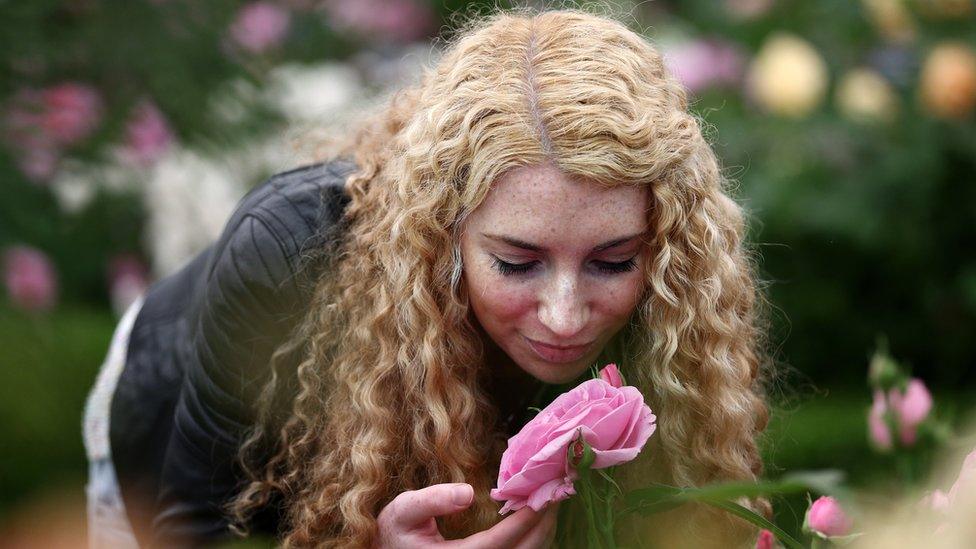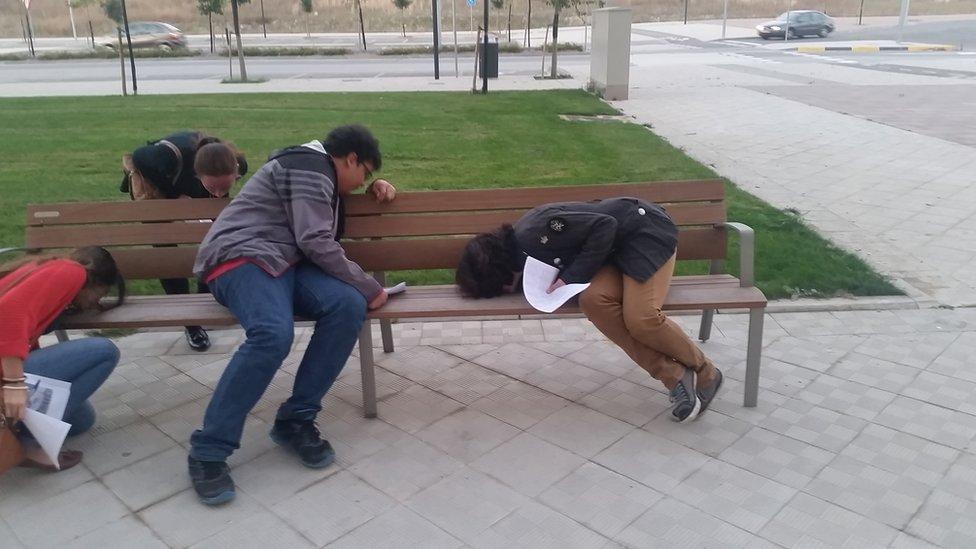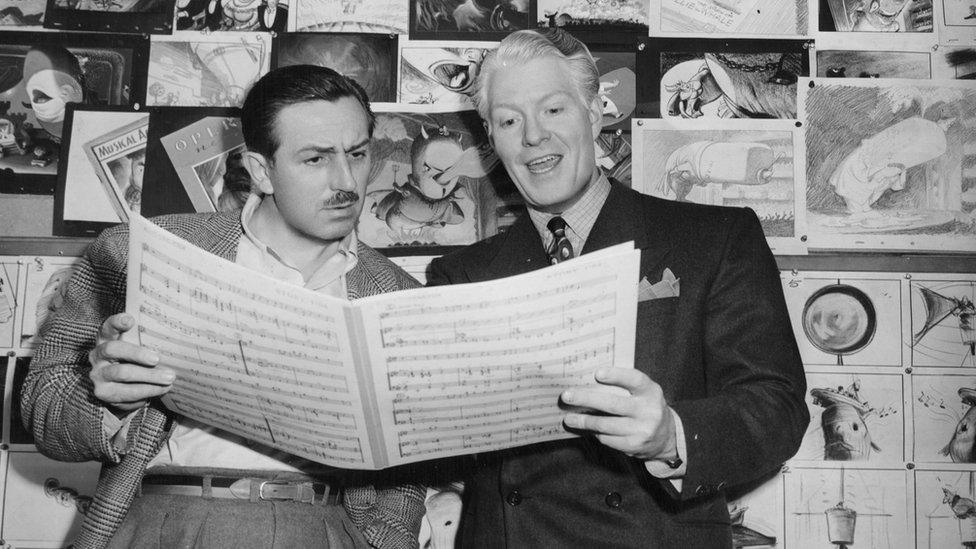Can city 'smellfies' stop air pollution?
- Published

Human descriptions of city smells can be used to build accurate "smell maps" of urban areas
In Regent's Park in central London I am down on the grass, sniffing the air like a dog.
"Flare your nostrils, and get closer to the sources of the odours," says artist and designer Kate McLean from Canterbury Christ Church University, as we seek out the subtle smell of snowdrops.
"Normally you'd breathe in for one and a half seconds, so we're quite slow like that, whereas a dog will sniff much faster."
Sniffing and flaring as we go, Kate is taking me on a "smell walk", a guided ramble around London's streets and green spaces to detect the dominant whiffs and odours.
There is some serious science behind our scented stroll.
Kate is a part of a team that has published a research paper on the connections between smells and cities., external
"When you are smell walking, you are often looking for the source of the odour, so the whole of our study was based on odour sources and what people actually noticed at and in specific environments," she explained.
"We then looked at the words and the descriptors that came from that and compared them to social media and with that we found that there were correlations between what people were actually describing in their photographs."
Armed with a "smell dictionary" that evolved from the city walks, Kate and the team analysed millions of images on Flickr and Instagram.
They then used the geographical information from these smell related images, dubbed "smellfies", to build the smell maps of London and Barcelona.

A smell based map showing levels of air pollution around Oxford Street in London
Clicking on a street on the London map, external allows you to zoom in and see how people have described the area, using terms related to emissions, nature, food, animals or waste.
So where people have tagged pictures with words including "cars" or "petrol" or "exhaust", these would be classified as emissions-related in the system and the map would show more red.
But can something built on people's subjective impressions of what they're smelling bear any relationship to objective data on air quality?
"Some people might say you're using social media, it's biased so you're just capturing most of the hipsters in East London," said Daniele Quercia, the computer scientist from Bell Labs who led the study.
"To double check we collected air quality indicators for each street sector for London and we looked at the relationship between these indicators and the profile from the smelly maps."
"We found that when there's a lot of nitrogen dioxide, then there are a lot of traffic emission related words. So, more or less the methodology works - there is a relationship between air pollution and the smelly maps."
Nasal gazing
There's growing scientific recognition of the power of our noses. A study in 2014 claimed that humans can discriminate at least 1 trillion olfactory stimuli, external.
While most of our nasal abilities are a bit more mundane, well trained noses can do important jobs in detecting air pollution.

Students sniffing a bench during a smell walk in Pamplona
In the Chinese city of Guangzhou, a team of "smell specialists" have been recruited to identify harmful pollutants in the air.
According to the People's Daily Online, external, air samples from different parts of the city are captured in sealed plastic bags. Sniffing the contents, the experts identify both the cause and scale of the dirty air.
So can the nasal-based information gleaned from smell walks also be put to practical uses?
Daniele Quercia says that the smelly maps could be used to change the way we work and play.
"If you go for a run next to a street full of traffic, it's the worst possible thing you can do - when you run your blood pressure goes up and your ability to absorb air pollution is far higher than if you were walking.
"But you could have technologies that would design a run for you next to nature based smells, and maybe smells that are more energising than calming. If you want to rest a bit you can do that on a public bench, where you have lavender which is a more calming smell."
A mobile phone app that would suggest walking or running routes for you based on smell based air quality information is in the works.
Other researchers are also building devices based on our nasal abilities.
When the Disney Corporation sent an exhibition of its archive material to China last year, officials were concerned about Beijing's notoriously dirty air.

When Disney recently sent a collection of artefacts to China they had to take special measures to protect the exhibition from air pollution
Air pollution is bad for humans but it can also prove disastrous to works of art, causing damage at much lower levels.
So Disney turned to Professor Ken Suslick from the University of Illinois and his opto-electronic pollution detector, external, an array of carefully calibrated dyes that change colour when exposed to different odours.
"One shouldn't underestimate the importance of one's own nose, we do take it for granted but it is not a quantitative tool," said Prof Suslick,
"It's very difficult for human beings to accurately quantify what the concentration of different odorants are, and having a simple colour-o-metric based response allows us to do things in a quantitative fashion and that's an extremely useful tool."
Prof Suslick and his team discovered that the wooden crates in which the artworks were transported were at least as large a problem in terms of threat from the air as was the exhibition centre itself.
New devices to help in the fight against air pollution are coming on to the market all the time, including this portable air monitor being developed at the University of Leicester to help gather precise data at a personal scale.
But back in Regent's Park, smell walker Kate McLean says that relying on technology alone in big cities would be a big mistake. Common, nasal sense has a big role to play.
"The technical equipment is always going to be valuable for odour monitoring, for pollution control for large factories, but in terms of the moving, shifting smell-scape which most cities are, then the human nose can contribute just as much if we decide to contribute in the same we do to traffic reports," Kate says.
"We can all become smell-meisters, there's nothing specialist about it, any single one of us can do it. Just get out there - go sniff!"
Follow Matt on Twitter, external and on Facebook, external.